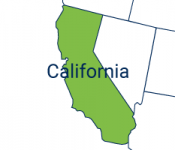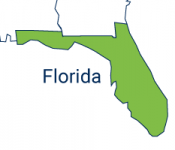
There are moments during driving that can make almost anyone angry; being cut off, sitting in slow-moving traffic, or even someone not turning when there is a large opening and the light is about to change. At the end of a long day or after a rough start to the morning, it’s hard not to react to these situations. Getting angry at another driver and acting on it in any way is aggressive driving.
Aggressive driving, or “road rage” as it is often called, is more than most people think. The AAA Foundation for Traffic Safety did a survey where almost 80% of drivers admitted to feeling angry and showing aggressive behavior while driving. Some of the most common behaviors included:
- Purposefully tailgating (51% or 104 million drivers)
- Yelling at the other driver (47% or 95 million drivers)
- Honking or displaying annoyance or anger (45% or 91 million drivers)
- Making angry gestures (33% or 67 million drivers)
- Trying to block a vehicle from changing lanes (24% or 49 million drivers)
These behaviors are each dangerous for the drivers themselves and others on the road. With so many news stories showing arguments escalating to physical harm or serious crashes from aggressive driving, it is no wonder that nearly 90% of the drivers surveyed said they felt aggressive drivers are a “serious threat to their personal safety”.
Consequences of Aggressive Driving
Whether you think you are an aggressive driver or not, there are subtle aggressive actions some drivers don’t realize they are doing. These include:
- Speeding
- Running a red light
- Driving too closely to the vehicle ahead
- Not letting others merge
- Using angry or obscene gestures
These behaviors can lead to car crashes or escalate some already high emotions. The most common consequences of aggressive driving involve getting a ticket and fixing a car. If you crash or get crashed into, there is autobody damage done that needs repair. If the insurance company sees a ticket for aggressive driving, they can raise your rates. Some more serious consequences include tickets/fees from a police officer, possible jail time, injury, and death.
Fixing the Behaviors
There are always going to be other drivers on the road that make you angry. People drive differently, are in a hurry, or are just learning to drive. Creating a plan before you start driving is a great way to help yourself to not overreact when something does happen. Here are three tips.
- Create space. The best way to proactively avoid an angry driver is to give yourself space around your vehicle. This gives you enough time to react if another driver does something suddenly. It also gives you better visibility to watch what is going on around you. Having a little extra space can also help change lanes faster if someone around you is behaving aggressively.
- Keep an eye out. Be careful on the roads and make sure you are looking around for aggressive drivers. They are often traveling too fast and in an erratic way. Watch for anyone with dangerous behavior and steer clear of them, if possible.
- Be a courteous driver. If you knew someone was dealing with an emergency or it was a new driver in training behind the wheel, would you be more patient and forgiving if they did something that made you angry? No one can ever truly tell what another person is dealing with, so assume the best instead of the worst. If someone does do something intentionally and they are acting aggressively toward you, fight the need to retaliate. Calm down and avoid making eye contact or engaging with the other driver.
Be Safe
Driving safely means staying calm behind the wheel. Remind yourself that it isn’t appropriate to react aggressively. Remember that the goal is to get yourself and any passengers to your destination safely and alive. Even if you feel your aggressive actions are justified, it is better to just calm down and keep going on your way.



